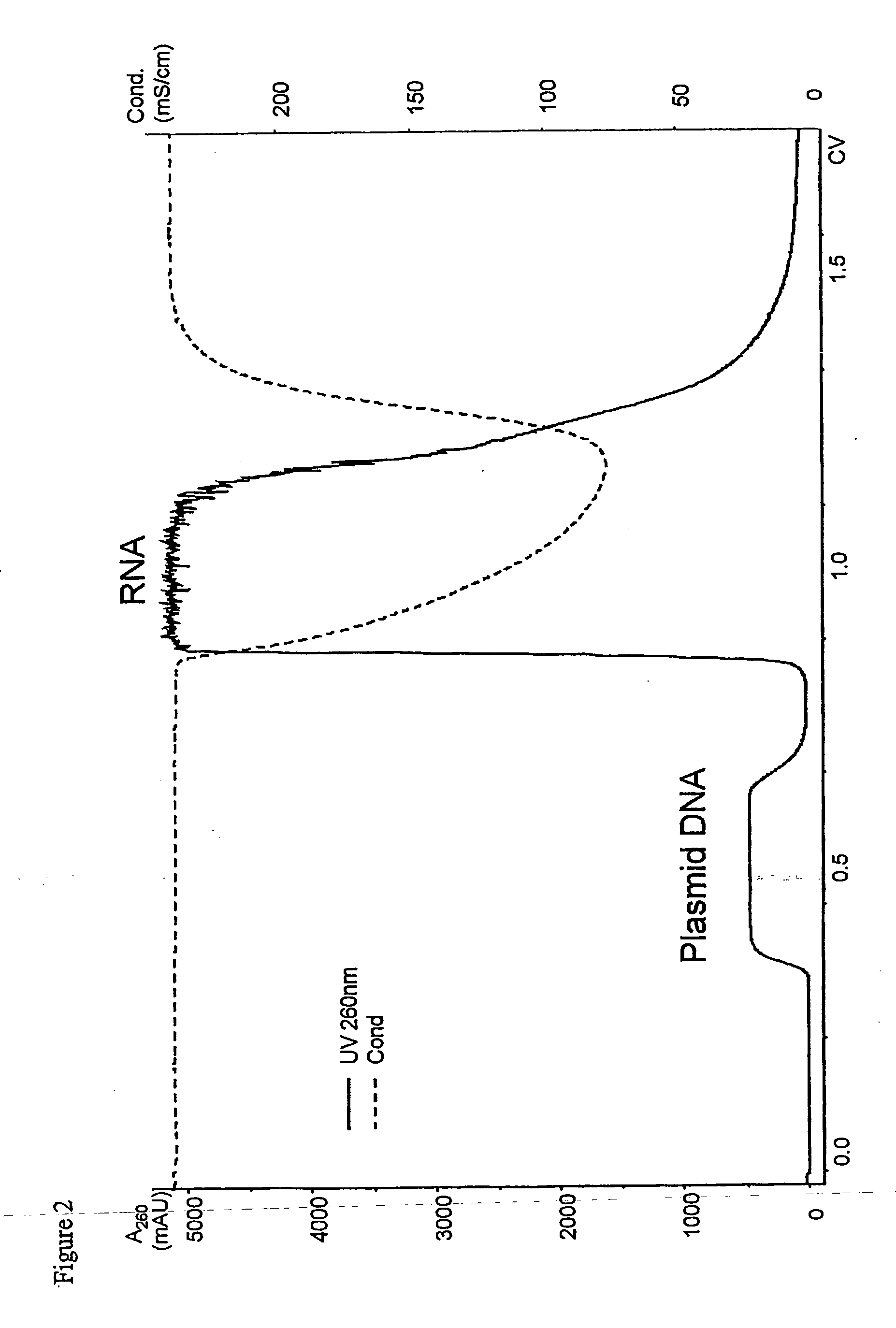Method of separation using aromatic thioether ligands
a technology of aromatic thioether and ligand, which is applied in the field of nucleic acid molecules separation, can solve the problems of difficult reproduction of approaches, insufficient quantity of supercoiled plasmid dna for non-analytical applications, and insufficient quality of plasmid dna thus produced, and achieves efficient separation of plasmids.
- Summary
- Abstract
- Description
- Claims
- Application Information
AI Technical Summary
Benefits of technology
Problems solved by technology
Method used
Image
Examples
Embodiment Construction
[0026] More specifically, a first aspect of the present invention is a method of separating nucleic acid molecules from contaminants in a solution, which method comprises the following steps [0027] (a) providing an aqueous adsorption solution, which comprises nucleic acids and a salt that forms lyotropic ions when dissolved; [0028] (b) passing said solution over a matrix to adsorb the desired nucleic acids onto the matrix, which comprises an aromatic ring moiety and at least one thioether moiety; [0029] (c) optionally washing the matrix; [0030] (d) passing an aqueous eluent over said matrix to desorb the nucleic acid molecules therefrom, which eluent in addition to a salt that forms lyotropic ions also comprises a gradient of increasing ionic strength originating from an increasing concentration of salt that forms less lyotropic ions when dissolved than the ones present during adsorption; and [0031] (e) isolating the fraction comprising the desired nucleic acid molecules.
[0032] In ...
PUM
| Property | Measurement | Unit |
|---|---|---|
| Molar density | aaaaa | aaaaa |
| Concentration | aaaaa | aaaaa |
Abstract
Description
Claims
Application Information
 Login to View More
Login to View More - R&D
- Intellectual Property
- Life Sciences
- Materials
- Tech Scout
- Unparalleled Data Quality
- Higher Quality Content
- 60% Fewer Hallucinations
Browse by: Latest US Patents, China's latest patents, Technical Efficacy Thesaurus, Application Domain, Technology Topic, Popular Technical Reports.
© 2025 PatSnap. All rights reserved.Legal|Privacy policy|Modern Slavery Act Transparency Statement|Sitemap|About US| Contact US: help@patsnap.com



